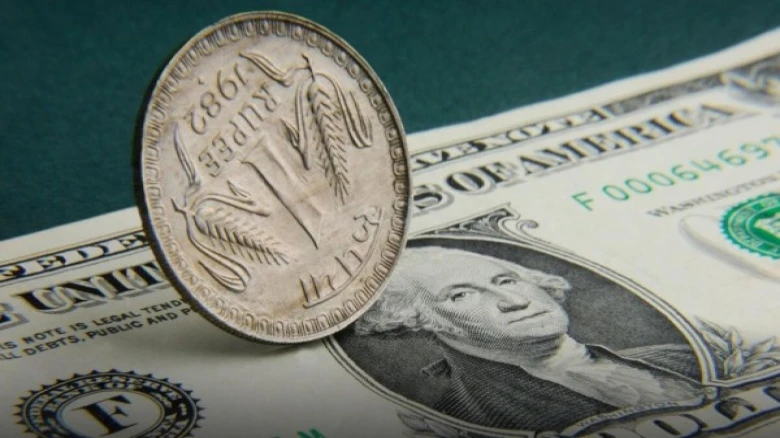Sci & Tech
Digital Desk: One thing AI has taught us in recent years is that what we see and hear might not be true to our senses. Checking the legitimacy of any content is very important in this era of AI-generated

India's currency has been depreciating since the country's independence from the British Raj.
Digital Desk: On August 15, 2022, India will commemorate 75 years of independence. The value of the rupee, the currency of India, has declined ever since the nation was freed from the British Raj.
The Indian rupee has declined in value, and now it costs approximately Rs 80 to buy one US dollar, down from a previous ratio of 13 rupees to one pound sterling, or 4 dollars.
The trade imbalance increased to record highs of $31 billion from essentially no deficit at the start of independence, which was mostly caused by the high cost of imported oil, and other factors have all contributed to the rupee's weakness during the past 75 years. The value of the rupee has decreased over 20 times since independence.
| Year | USDINR | IMF India CPI | IMF US CPI | India 10 Bond Yr. Yield (%) | US 10 bond Yr. Yield (%) | Bond Yield Diff. |
| 10-08-2022 | 79.46 | 204.7297 | 135.8879 | 6.455 | 2.7773 | 3.6777 |
| 31-12-2020 | 73.07 | 182.9888 | 118.6905 | 5.867 | 0.9132 | 4.9538 |
| 31-12-2010 | 44.705 | 100 | 100 | 7.915 | 3.2935 | 4.6215 |
| 31-12-2009 | 46.525 | 89.2942 | 98.3864 | 7.581 | 3.8368 | 3.7442 |
| 31-12-2000 | 46.675 | 54.3383 | 78.9707 | 10.902 | 5.112 | 5.79 |
| 31-12-1991 | 25.79 | 26.1321 | 62.4573 | 6.699 | ||
| 31-12-1990 | 18.12 | 22.949 | 59.9198 | 8.067 |
| CAGR from 1991 | CAGR from 2009 | |
| USDINR | 3.74% | 4.34% |
| IMF India CPI | 7.00% | 6.80% |
| IMF US CPI | 2.59% | 2.59% |
| CPI Diff. | 4.41% | 4.21% |
The rupee was linked to the US currency, not the British pound, until 1966. India experienced extreme economic and political hardship in the middle of the 1960s. According to analysts, inflation has driven Indian prices up significantly more than global costs.
India swiftly devalued the Indian rupee in 1966, going from 4.76 to 7.50 to the dollar. Foreign aid was halted in 1966, and before it could resume, India was instructed to loosen its trade barriers.
India continued to use a fixed exchange rate system in 1991, where the value of the rupee was tied to the value of a basket of main trading partners' currencies. The rupee lost value against the dollar and the pound sterling by roughly 18.5% and 17.4%, respectively, in just three days.
The rupee has lost value against the US dollar at a CAGR of 3.74% since 1991. The exchange rate between 2000 and 2007 was between $1 dollar equaling Rs 44 and Rs 48. With the commencement of the global financial crisis in 2008, the drop picked up again.
Why has the rupee lost value since its independence?
"India was formerly referred to as a "third world country," but since gaining independence, we have made development in many spheres and today have one of the largest economies in the world. The rupee, which was linked to the dollar at 3.5 in 1947, recently tested the 80 levels as energy prices worldwide have increased significantly since the creation of COVID and as the dollar substantially rose against its major currencies. The trade deficit has reached historic highs of $31 billion, up from essentially no deficit at the time of independence, which was mostly caused by high oil import costs, according to Gaurang Somaiya, a forex and bullion analyst with Motilal Oswal Financial Services.
"The 1990 Gulf War and worsening external balance brought India to the verge of default and payment default." While the fiscal deficit as a share of GDP increased between 1990-91 and 1991-92, government spending growth was sharply reduced. The reform push boosted GDP growth significantly until 1997-98. "In 2007-08 and 2008-09, the central government's spending increased by more than 20% on an annual basis," he added.
India's GDP has surged sharply since the beginning of the reform process that began in 1991. It is not immune to global upheaval and yet it can keep inflation under control. The rupee could continue to fall against the US dollar going ahead, but the pace of depreciation could be slowing.
India's GDP has surged sharply since the beginning of the reform process that began in 1991. It is not immune to global upheaval and yet it can keep inflation under control. The rupee could continue to fall against the US dollar going ahead, but the pace of depreciation could be slowing down, said Gaurang Somaiya, Forex & Bullion Analyst, Motilal Oswal Financial Services.
Leave A Comment